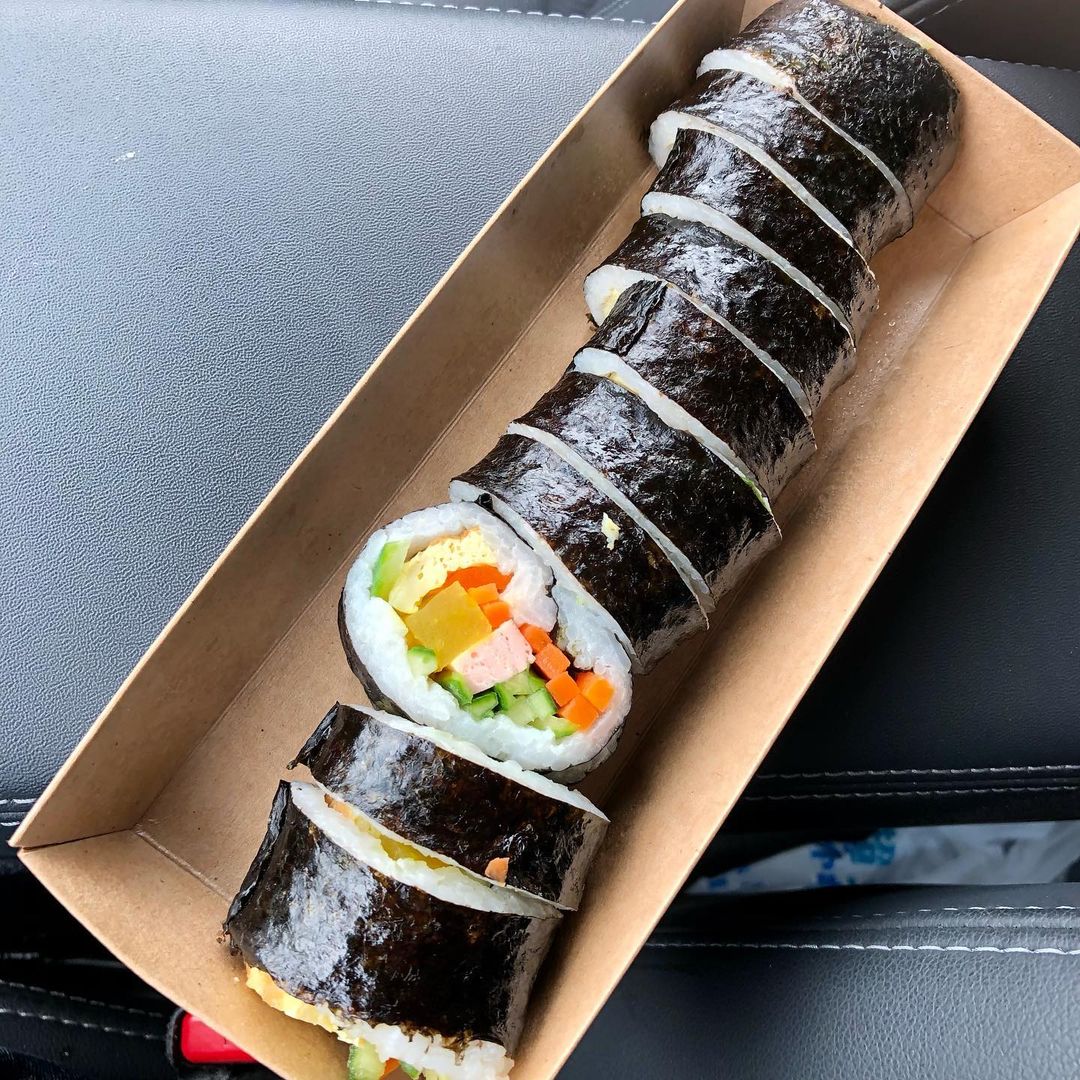What is Kimbap you might ask? Like many people from Western countries, before ever arriving in Korea my first experience with seaweed-wrapped rice rolls was Japanese sushi. In Japanese restaurants, these sushi rolls are a classy affair, filled with expensive ingredients like avocado, shrimp, and raw fish and then dipped in wasabi-laden soy sauce (or doused in soy sauce, as many seem to prefer salty soy sauce to the flavor of the fish.) Leave it to Korean cuisine to turn this dish into a much more down-to-earth, affordable, and portable affair.
In Korea, kimbap is the ideal to-go food – the equivalent of a sandwich where I come from. Ask a Korean to do some word association with the word “kimbap” and you’ll inevitably get “picnic” quickly thrown in there – hence this article running during the perfect picnic weather season. And dipping kimbap in wasabi and soy sauce would clearly gain you the bewildered stares of your Korean dining counterparts.
There are a few essential ingredients that you will find in just about every kimbap: marinated radish (단무지), scrambled eggs (계란말이), and julienned carrots (당근). Then comes the addition of one or more of three mystery types of meat: a spam-like substance deceptively called “ham” (햄), artificial crab (맛살), and fish cakes otherwise known as odeng (오뎅). If you don’t like any of those, remember to request they be left out when ordering at a restaurant.
After that, you will run across any number of additional vegetables thrown in there, with some of the most common ones being steamed green onion (파), steamed spinach (시금치), cucumber (오이), or perilla leaf (깻잎). The above ingredients constitute the basics, but then you will commonly run across upgraded and slightly more expensive varieties that add things like tuna (참치 – canned, not raw like the Japanese variety), beef (쇠고기), cheese (치즈) and kimchi (김치).
That final variety I’ll never understand ordering in a restaurant as the roll will come with kimchi on the side anyway. Why pay more for it to be rolled up with your food? You’ll often also see an “everything kimbap” (모듬 김밥) that includes all of the above specialties spread throughout the roll for a different taste in every bite.
As with any dish, however, restaurants can get quite creative with it. You could run across any number of varieties, and I’ve seen spicy squid kimbap (낙지볶음 김밥), fried pork cutlet kimbap (돈까스 김밥) and fish egg kimbap (날치알 김밥). I suppose the varieties are limited only by the chef’s imagination, but the great part is that no matter what they add you’re never going to pay more than W3,500 for a kimbap, and you’re likely to find some kimbap chains that offer a quick snack for the low, low price of W2,000 or even W1,500 for a quick roll of wholesome seaweed, vegetables, and rice.
Netizen’s Picks

Drug Kimbap 마약김밥
When the narcotics officers bust open a roll from Drug Kimbap, there won’t be anything inside but carrots and leeks. Nevertheless, this kimbap restaurant hidden inside Gwangjang Market has throngs of loyal customers who find the food strangely addictive. Rock and roll for W2,500. Gwangjang Market, 6-1 Yeji-dong, Jongno-gu, Seoul.
Kimbap Heaven 김밥천국
Kimbap Heaven, or Kimbap Cheonguk in Korea, is one of the biggest kimbap chain stores in Korea. Most offer various kinds of kimbap including tuna and kimchi along with other popular Korean dishes. The franchise, along with look-alike competitors such as Kimbap Nara (김밥나라) and Kimgane Kimbap (김가네 김밥), can be found almost anywhere in Korea.
Olle Market Kkongchi Kimbap 올레시장 꽁치김밥
Imagine a whole fish in a roll of kimbap. You won’t find this at your neighborhood Kimbap Heaven! Head down to Jeju and visit Olle Market in Seogwipo for a roll of kimbap containing one kkongchi (Pacific saury). Call the roll for W3,000. Seogwipo Olle Market, Woojung Raw Fish Center, 277-1 Seogwi-dong, Seogwipo-si, Jeju.
========











5 comments
Felix
I love love love Korean food and this was no exception, thank you for sharing it! Now I have added another taste to my palette
David
and 계란말이 not 계란마리
Stephen Revere
Very true David! Thanks so much for helping us get those right. They have now been corrected. Apparently we need to have more editors for the Korean part as well as the English part of the magazine!~
David
it’s 당근 not 단근
seoulfoodyo
i don’t think 파 is a common kimbab ingredient